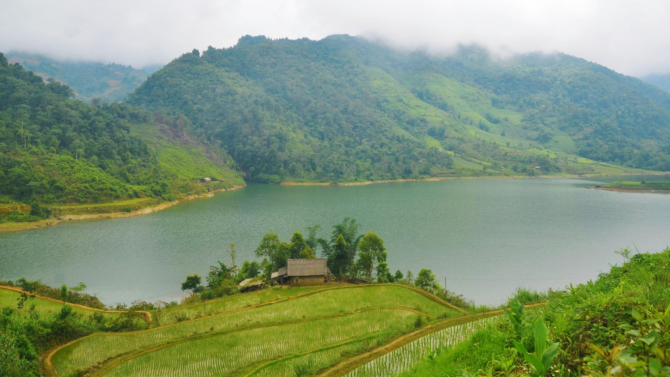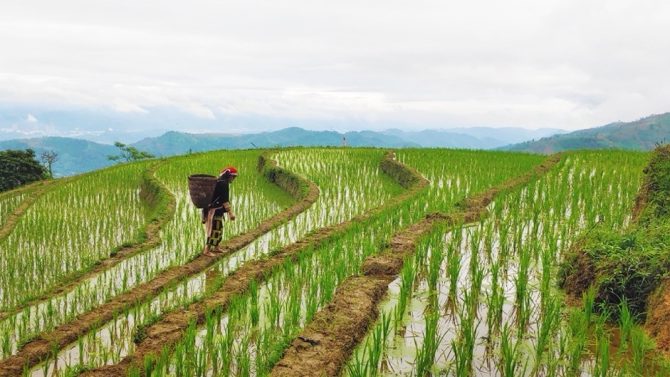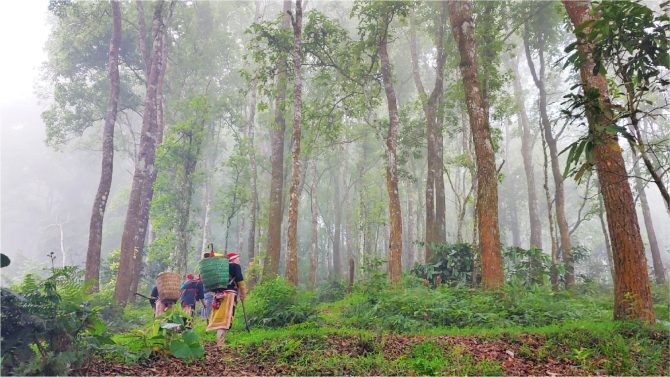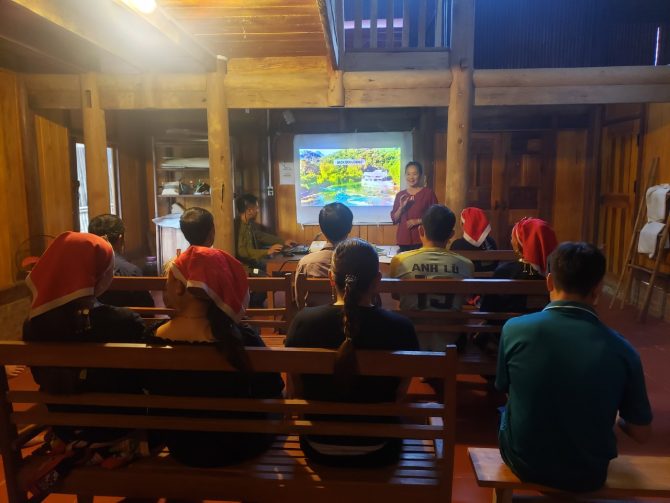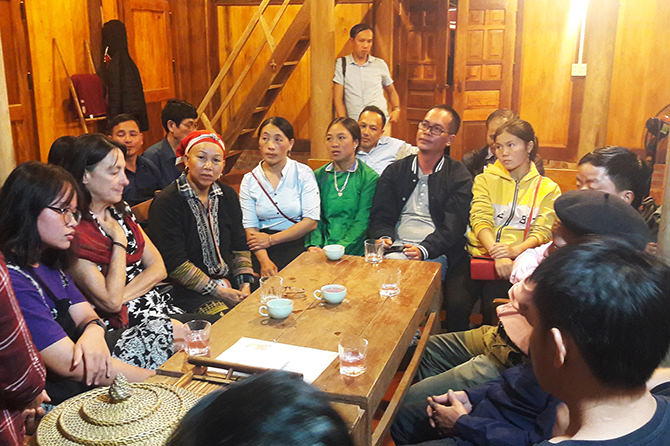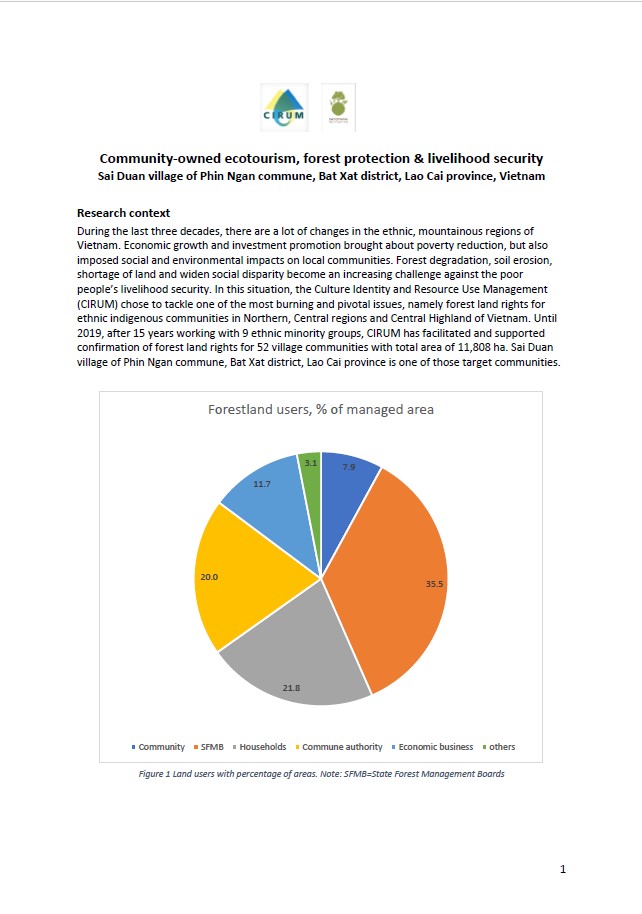2021 VIETNAM
Assessment of Red Dao local knowledge on herbal bathing and forest protection
Culture Identity and Resources Use Management (CIRUM)
Community / field-based implementation
Landscape
Overview
The industrialization of agriculture has been in Vietnam has been taking place without proper acknowledgement and encouragement of local traditional knowledge and practice. Consequently, some upland ethnic minority communities are at risk of losing their natural resources and neglecting their local ecological knowledge and practices including forest management and protection. The Red Dao ethnic community in Sai Duan village and Phin Ngan commune have been facing such problems. Fortunately, recent efforts by community members and external support from CIRUM have helped to mitigate the negative trend. In particular, the village community was supported in obtaining forestland right certificates, and community members could apply for their community regulations (customary laws) to protect forests. Moreover, a model of traditional knowledge and practice of herbal medicines, especially Red Dao herbal bathing, has been revitalized and become a source of income for villagers. This initial success has not yet been fully researched, formally discussed and published for awareness raising and possible replication.
This project had the following objectives
1. Identify and map native forestry species and natural nurseries with mother trees by community members;
2. Initiate an organic model of herbal bathing and community soft eco-tourism continuously developed by the target community;
3. Share experiences of the target community and publish widely for further exchanges, cooperation and application in the future.
To achieve the objectives, the following activities were conducted:
- Interviews and a 15-person group discussion about local knowledge and ways to approach community sustainable development
- Participatory survey on 127 ha of forest and identification of natural seeds and medicinal herbs in the community forests
- One village meeting with the participation of 21 community representatives, 2 local policy makers and two supporting facilitators, and revised community forest maps and regulations for the protection of native trees
- Production of a video documentary
- Written-up case study and PowerPoint presentation
Key achievements
- The most important achievement was community’s agreement on the revision and application of forest protection, the use of medical herbs, and fair sharing between the herbal bathing service and community members.
- A 16-minute video documentary (URL: https://www.youtube.com/watch?v=iFt8_KXAdss), a case study (https://drive.google.com/file/d/1WXpUUef9jefI0ZxdSumkO3sqn7Cqi-S8/view) and a PowerPoint presentation (https://drive.google.com/file/d/1bc3J8RC_-dbanlcCpH5mL4WNvj9vwlzs/view?usp=sharing) on the case of Sai Duan were completed for the purpose of widely sharing to the public.
- Local officials and policy makers at provincial and central levels are informed of the research results and publication, so they acknowledge and support local herbal knowledge and enforcement of community regulation on forest management and protection.
- The pilot model of Sai Duan village community-owned herbal bath or soft-ecotourism in combination with preserving local species and medicinal herbs is applied and expanded in other villages in Phin Ngan commune as well as other similar communities.
Lessons
Once communities gain full rights over community forests, they will be able to better use and protect forest resources. External supporters need to study the target community to understand community customary law, local knowledge and values, and to support the community to capitalize on their strengths.
Project location
Organisation
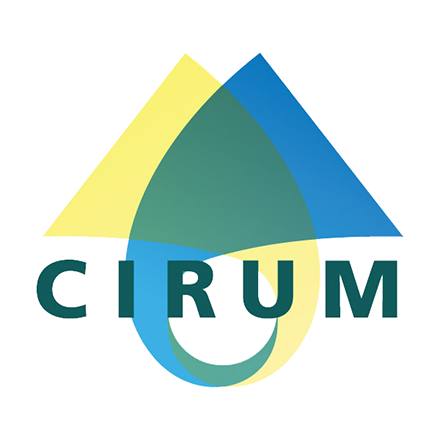
Culture Identity and Resources Use Management (CIRUM)
- Sector
- Non-governmental / civil society
- Country
- Vietnam
- Website/SNS
- http://cirum.org/
Related products
Cultural and ecological tourism of the Red Dzao ethnic group in Sai Duan village, Vietnam
- Publisher
- Culture Identity and Resources Use Management (CIRUM)
Pilot model of community enterprise, "Cultural - ecological tourism of the Red Dzao ethnic group" in Sai Duan village, Phin Ngan commune, Bat Xat district, Lao Cai province
Community-owned ecotourism, forest protection & livelihood security: Sai Duan village of Phin Ngan commune, Bat Xat district, Lao Cai province, Vietnam
- Publisher
- Culture Identity and Resources Use Management (CIRUM)
During the last three decades, there are a lot of changes in the ethnic, mountainous regions of Vietnam. Economic growth and investment promotion brought about poverty reduction, but also imposed social and environmental impacts on local communities. Forest degradation, soil erosion, shortage of land and widen social disparity become an increasing challenge against the poor people’s livelihood security. In this situation, the Culture Identity and Resource Use Management (CIRUM) chose to tackle one of the most burning and pivotal issues, namely forest land rights for ethnic indigenous communities in Northern, Central regions and Central Highland of Vietnam.
Relevant projects
Projects of the same year
Aichi Biodiversity Targets
Aichi Biodiversity Targets
-
Awareness increased
-
Habitat loss halved or reduced
-
Sustainable agriculture, aquaculture and forestry
-
Genetic diversity maintained
-
Ecosystems and essential services safeguarded
-
Traditional knowledge respected and integrated
Sustainable Development Goals
Sustainable Development Goals
-
Life on land
